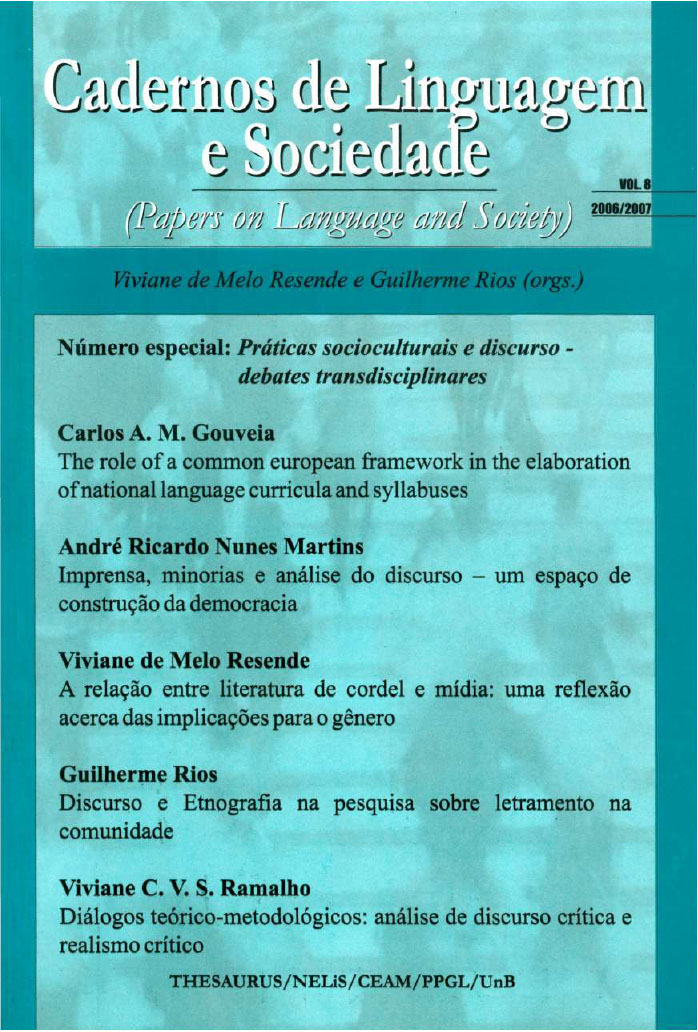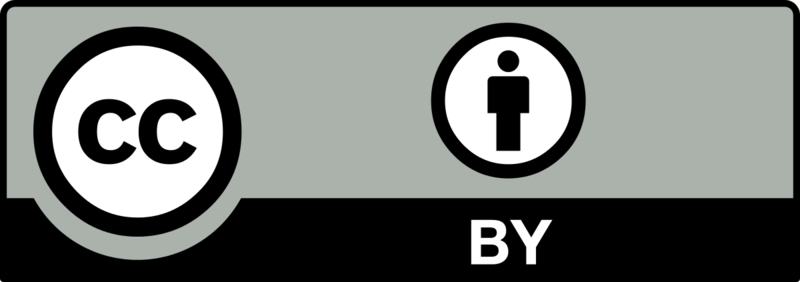The role of a common european framework in the elaboration of national language curricula and syllabuses
DOI:
https://doi.org/10.26512/les.v8i0.9186Palavras-chave:
Systemic Functional linguistics; Critical discourse Analysis; Positive discourse Analysis; Common European Framework of Reference for Languages.Resumo
Following the Systemic Functional Linguistics based theory and methodology of Positive Discourse Analysis, this paper discusses some of the political, cultural and educational propositions motivating the Council of Europe’s document Common European Framework of Reference for Languages. A close reading of the text clearly shows that while attempting to promote a plurilingual approach to the learning of languages in Europe, the document also calls for a change in teaching practices aiming at a transformation in the dynamics of language relations in Europe. Some of the issues focused upon in the paper derive directly from the document’s stated objectives, namely questions of levelling, standardization, democracy and hegemony, on the one hand, and questions of plurality, independence, empowerment and difference, on the other.Downloads
Referências
COUNCIL OF EUROPE. Common European Framework of Reference for Languages: learning, teaching, assessment. Cambridge: Cambridge University Press, 2001.
FULCHER, G. Are Europe’s tests being built on an ‘unsafe’ framework? Guardian Weekly, March 18th , 2004a.
FULCHER, G. Deluded by Artifices? The Common European Framework and Harmonization. Language Assessment Quarterly, 1(4): 252-266, 2004b.
HALLIDAY, M. A. K. An Introduction to Functional Grammar. 3 ed. revised by C. M. I. M. Matthiessen. London: Arnold, 2004.
KEDDLE, J.S. The CEF and the secondary school syllabus. In: K. Morrow (org.) Insights from the Common European Framework. Oxford: Oxford University Press, 2004, pp. 43”“54.
MARTIN, J. R. Design and practice: enacting functional linguistics. Annual Review of Applied Linguistics, 20: 116-126, 2000.
MARTIN, J. R. Positive Discourse Analysis: Solidarity and Change. Revista Canaria de Estudios Ingleses, 49: 179-200, 2004.
MILANOVIC, M. (org.) Language examining and test development. Strasbourg: Council of Europe Language Policy Division, 2002.
MORROW, K. (org.) Insights from the Common European Framework. Oxford: Oxford University Press, 2004.
NORTH, B. Europe’s framework promotes language discussion, not directives. Guardian Weekly, April 15th , 2004.
TRIM, J. L. M. et al. Common European Framework of Reference for Languages: Learning, teaching, assessment ”“ A Guide for Users. Strasbourg: Council of Europe Language Policy Division, 2002.
van EK, J. A. Threshold Level English. London: Pergamon Press, 1980.
WEIR, C. J. Limitations of the Common European Framework for developing comparable examinations and tests. Language Testing, 22 (3): 281”“300, 2005.
Downloads
Publicado
Como Citar
Edição
Seção
Licença
Autores/as que publicam nesta revista concordam com os seguintes termos:
Autores/as mantêm os direitos autorais e concedem à revista o direito de primeira publicação, sendo o trabalho simultaneamente licenciado sob a Creative Commons Attribution 4.0 International license que permite o compartilhamento do trabalho com reconhecimento da autoria do trabalho e publicação inicial nesta revista.



